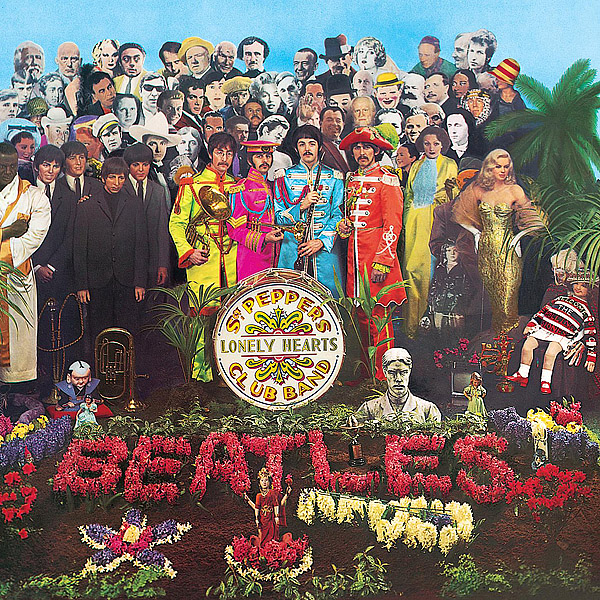
March - April 1967
Designing the packaging for “Sgt. Pepper’s Lonely Hearts Club Band”
Last updated on October 9, 2024

March - April 1967
Last updated on October 9, 2024
Session Feb 28, 1967 • Recording "Lucy In The Sky With Diamonds"
Article March 1967 • Paul McCartney helps out International Times financially
Article March - April 1967 • Designing the packaging for “Sgt. Pepper’s Lonely Hearts Club Band”
Session Mar 01, 1967 • Recording "A Day In The Life", "Lucy In The Sky With Diamonds"
Interview March 1967 • The Beatles interview for The Beatles Monthly Book
Next article Mar 02, 1967 • The Beatles win Grammy Awards for "Michelle", "Eleanor Rigby" and the Revolver cover
EMI insisted that they needed permission from every person depicted on the “Sgt. Pepper” cover or their estate, to reduce legal risks. To handle this, NEMS hired Wendy Hanson, Brian Epstein’s former personal assistant, to make the necessary contacts and obtain the clearances.
Hollywood actress Mae West needed to be convinced, as she initially didn’t want to be associated with a “lonely hearts club”. Meanwhile, child actress Shirley Temple requested to hear the record first, which was not feasible. After discussion with George Harrison, Wendy Hanson clarified that they did not seek permission from the Indian Gurus, as “the likelihood they would see the photos, let alone sue, was so remote that we have done nothing about them.” Actor Leo Gorcey was the only one who requested a fee and was eventually removed from the cover.
Despite obtaining the clearances, EMI asked NEMS to pay a significant sum of money in anticipation of possible legal action. To make things simpler for everyone, Sir Joseph Lockwood, EMI chairman, suggested an alternative cover design in which all the individuals behind the Beatles were removed, but the Beatles declined this proposal. Brian Epstein even suggested using brown paper bags to conceal the cover photo.
Brian hit the roof when he saw the cover and realized the legal entanglements of getting permission to use the photographs. He begged the boys to use a brown paper bag as the album cover instead, but the Beatles insisted it be kept the way it was. In the end, the Beatles had to indemnify EMI for £20 million against possible lawsuits.
From “The Love You Make: An Insider’s Story of the Beatles” by Peter Brown and Steven Gaines, 2002
Brian was in America with his business partner, Nat Weiss Being a bit nervous – as you sometimes are before flying – he left a note with Nat about the cover for the new album.
Neil Aspinall – From “The Beatles Anthology” book, 2000
Brian had a premonition that his plane was going to crash, so he sent a letter saying: ‘Brown paper bags for Sgt Pepper.’
George Harrison – From “The Beatles Anthology” book, 2000
When the cover was finished, Sir Joseph Lockwood had a meeting with Paul. I was there when he brought the album cover in. It had the flowers, the drum, the four Beatles — and a big blue sky. They’d wiped out all the people behind, because he was frightened that they might all sue or not want to be on the cover
Neil Aspinall – From “The Beatles Anthology” book, 2000

Paul refused and said that no way would they lose all the people. In the end Brian ‘s office wrote to everybody, saying: ‘Sign here if you agree.’ Everybody did, except Leo Gorcey of the Bowery Boys who wanted $500. He was on the back row, so they just put a bit of blue sky where he had been. Brian thought the sleeve was wonderful. It gave him a bit of a headache having to ask everybody’s permission, but he thought the idea was great
Neil Aspinall – From “The Beatles Anthology” book, 2000
[Sir Joseph Lockwood] came round. And he said, ‘Oh, er,’ smirking a bit. ‘We have some problems on this. I’m afraid they’ve sent me around.’ And he said, “There are going to be a lot of problems on all these people, all these faces, because everyone has the right to their own likeness and you can’t just put them on a cover. They’re going to sue us. We’re going be up to our eyeballs in lawsuits.’
I said, ‘No, you won’t.’ He said, ‘We will.’ I said, “They’ll all be pleased to be on it.’ I said, ‘What you should do is ring them all and ask ’em! Have you rung them all?’ ‘No.’ I said, ‘Well, ring Marlon Brando, or his agent, and say, the Beatles would love him to be on this little montage, on the front. It’s nothing detrimental or anything. It’s a homage that the Beatles are doing to these people. Explain it. I would think they would be pleased to be on it. It’s a big thing being on a Beatle cover…’ ‘Mmmm,’ he said. ‘We’ll get a lot of letters.’ So I said, ‘Well, everyone you get a letter from, let me know and it’ll have to come out of royalties, so cover your ass legally but just let us get on with it.’ Which he did.
Paul McCartney – From “Paul McCartney: Many Years from Now” by Barry Miles, 1997
I said, ‘Don’t worry, Joe – it’s going to be great, man.’ He said, ‘Well have dozens of lawsuits on our hands – it will be absolutely terrible. The legal department is going mad with it.’ 1 told him, ‘Don’t worry, just write them all a letter. I bet you they won’t mind. So write to them, and then come back to me.’
Paul McCartney – From “The Beatles Anthology” book, 2000
I told them they would have to take Gandhi out as he was a holy man and that they would have to get permission from each of the people included in the picture before we would agree to its use. They gave us an indemnity for 10 million dollars royalties in the light of any legal action and set about contacting the people. The first telegram they sent was to Leonard Bernstein, who said he would be ‘delighted’ to be on the sleeve and the remarkable thing is that we have never had a single claim on that record even though the Beatles didn’t bother to contact everybody.
Sir Joseph Lockwood – From “Paul McCartney: Many Years from Now” by Barry Miles, 1997 (quoted from “Abbey Road” by Brian Southall)
We had to get permission and pay a royalty to everyone on the sleeve. In fact, a lovely lady, called Wendy Hanson, Brian’s PA, had to find all these people and pay them a half penny.
Alistair Taylor – From “The Beatles: Off the Record” by Keith Badman, 2008
[Brian Epstein’s] long-suffering assistant Wendy Hanson had already resigned in desperation because drugs had made him impossible to deal with. He had to hire her on afreelance basis specifically to get the copyright clearances for the album since no one else at NEMS was capable of doing it.
From “Paul McCartney: Many Years from Now” by Barry Miles, 1997
Brian asked me to try and get legal clearances from everybody within a week. EMI wasn’t keen on the cover, but Paul wanted to do it. It was an incredible job. I spent many hours and pounds on calls to the States. Some people agreed to it, but others wouldn’t. Fred Astaire was very sweet and Shirley Temple wanted to hear the record first. I got on famously with Marlon Brando, but Mae West wanted to know what she would be doing in a lonely hearts club.
Wendy Hanson, Brian Epstein’s personal assistant – From “The Beatles: Off the Record” by Keith Badman, 2008
Mae West replied, ‘No, I won’t be in it. What would I be doing in a lonely hearts club?’ So, The Beatles wrote her a personal letter and she changed her mind.
Peter Blake – From “The Beatles: Off the Record” by Keith Badman, 2008


If obtaining legal clearance for the front cover was difficult, there were also legal complexities and hurdles for the back cover. It was decided that the album’s lyrics would be printed in full on the back cover, which was the first time this had been done on a rock LP. This decision required reaching an agreement with the publishing company, as they were concerned that it could negatively impact sales of the sheet music.
The back took some time and had to be left till last because we were printing lyrics and they had to be designed and we had to have a running order and we couldn’t have that until everyone had decided on it. I remember Paul and I walking along, I think Kingly Street in the West End, trying to work out some clever word using the initial letter of each song – the first would have to be S for Sgt Pepper and then we’d try and get a vowel, say – but we couldn’t get it right, so the running order was decided in another way. But it all worked out and we made it on time.
Neil Aspinall – From “It Was Twenty Years Ago Today” by Derek Taylor, 1967
Then we had a few meetings and we decided it might need to be a gatefold thing because we started to need space. George Martin in his book says Sgt. Pepper was going. to be a double album but they didn’t have enough material. I’m not sure that’s true. I think it was always going to be single album but we ran out of space for the artwork rather than have too little material. We suddenly had an art project here and people want canvases, you know.
Paul McCartney – From “Paul McCartney: Many Years from Now” by Barry Miles, 1997
Gene Mahon, the designer responsible for creating the sleeve along with his colleague Al Vandenberg and graphic designer Gordon House, likely decided to include the lyrics on the back cover. Mahon also suggested adding the line “A splendid time is guaranteed for all” from the song “Being For The Benefit Of Mr. Kite!” at the end of the credits. Gordon House was brought in for his typographic expertise.
Towards the end of the credits, the first mention of “The Apple,” the company to be created by The Beatles and registered in November 1967, appears.
The photo used for the back cover features John Lennon, George Harrison, and Ringo Starr facing the camera, with Paul McCartney’s back to the camera. This was seen as another clue contributing to the “Paul Is Dead” rumour.
[Gene Mahon] was a nice Irish guy who was at an ad agency who we found to help pull it all together because we had Michael Cooper, we had Robert, Peter, Jann, Neil and all of us to get together.
Paul McCartney – From “Paul McCartney: Many Years from Now” by Barry Miles, 1997
On the back cover, somewhere at the bottom, along with the credits and stuff, there’s a line from the lyrics of the song: ‘A splendid time is guaranteed for all’ or something like that. It appeared there after I suggested it: “Let’s take this line and put it there”
Gene Mahon – From beatles-chronology.ru
[Gordon House and I] often worked together as designers, notably when I did the front cover of the LP by the Beatles Sgt. Pepper’s Lonely Hearts Club Band and Gordon was responsible for the typography on the back of the record. He went on to work on the White Album for the Beatles with Richard Hamilton, then on further Beatles recordings and, later, most of Paul McCartney’s records.
Peter Blake – Obituary for Gordon House, 2004

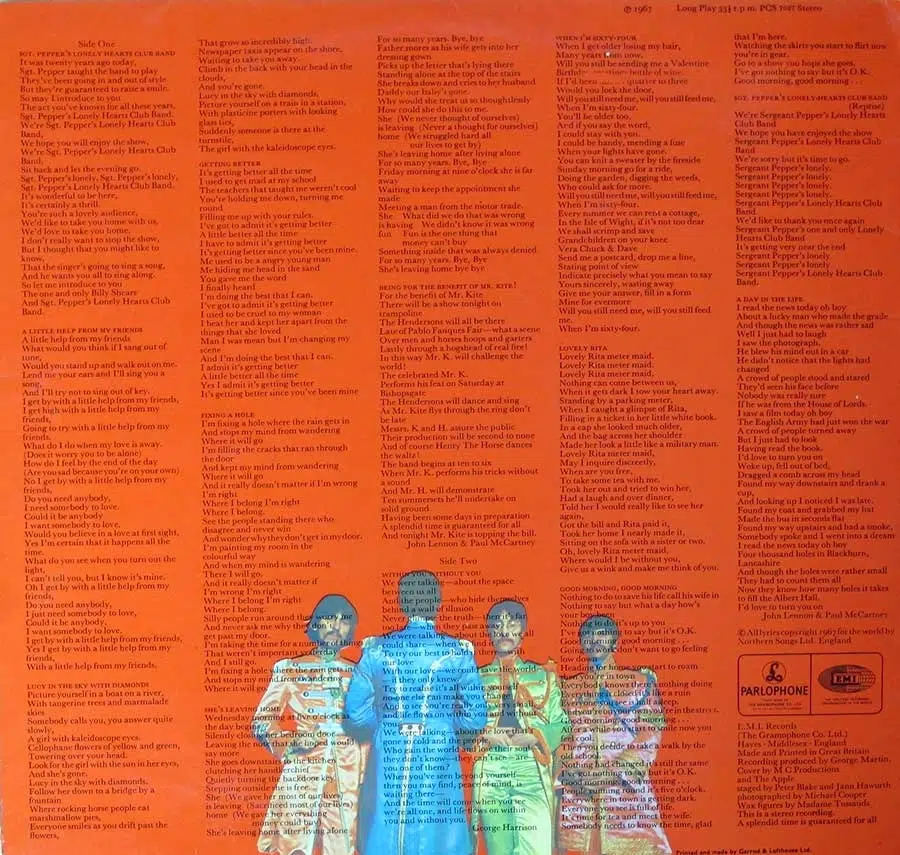
A sheet of cardboard cut-outs designed by Peter Blake and Jann Haworth was included as a bonus gift. These featured a postcard-sized portrait of Sgt. Pepper, a fake moustache, two sets of sergeant stripes, two lapel badges, and a stand-up cut-out of the band in their satin uniforms. According to some sources, the portrait was likely based on a photograph of British Army officer James Melville Babington, while others suggest it may have been similar to a statue from John Lennon’s house that was used on the front cover.
Peter [Blake] had wanted some gifts to be enclosed in the boxed set; a postcard of Sgt. Pepper, a set of sergeant’s stripes, a folding cardboard sign, a false moustache and two badges. EMI said that they were already way over budget and wouldn’t spend the money, but Peter was determined to get the idea across. So, on the following Sunday [April 3, 1967], we met at the studio and I took photographs of the things he had produced and made prints for him to take away. He then designed the cardboard sheet that was slipped inside.
Nigel Hartnup – Assistant to photographer Michael Cooper – From The man who *really* took the photo – Sgt Pepper Photos (wordpress.com), July 12, 2017
I wanted a great cover, I wanted it packed with images. I wanted something I could read on the bus back from Lewis’s, because that’s what I used to do. I’d take it out of its brown paper bag and read it. And I could read some albums for half an hour and just look at the graphics. It was the age of sleeve notes. So we wanted to pack it with goodies. One of the ideas was to have an envelope and in it we were going to have things like they used to hand out in comics: we wanted transfers you could stick on yourself, because we had those when we were kids. It was all childhood memories.
I had to fight at EMI even for things like the thickness of the cardboard. EMI were always trying to give me less and less thick cardboard. I said, “Look, when I was a kid, I loved my records, the good ones, and I wanted to protect them and thick cardboard would keep my records. That’s all I want to do is give the kids who buy our stuff something to protect our records.’ ‘Well now, Paul, we can’t do it, the volume you boys sell at. If we can save point oh oh pence … And you can’t tell the difference.’ ‘I bloody can! That’s a thin piece of cardboard!’ But I got my thick cardboard. I was always arguing for things like that. It somehow fell to me. Later people put me down for that, ‘Oh, he was always the pushy one, the PR one.’ The truth was, no other fucker would do it! And it had to get done, and I was living in London and I could hop in a taxi and go down Manchester Square and say, ‘I’ll be down in ten minutes to talk to you about the cardboard.’
Our idea was to give people a record, which is a damn fine record, you get a thick cover, which lasts and lasts for years and years, you get a cover you can read forever, you get goodies, freebies, and ‘all yours for the price of a regular record’! That’s what we wanted to do. They kept saying, ‘No, that’ll increase the price,’ so the envelope of little sticky things had to become more practical. So that became the insert with Sgt. Pepper on it that you could take off and make into a badge, the moustache and the bass drum. That became the practical way they could give it to us. We fought like devils, I tell you. But I see no reason why you shouldn’t fight for things like that. It was like, ‘We’re the Beatles, it’s not as if we’re some shitty act. We’re making you a lot of money. It’s not as if you couldn’t give us a little bit back. All we’re trying to do is give people a great deal, they’ll buy more because it’s a great deal and they’ll come back for the next one,’ so it all seemed very wise to us.
Paul McCartney – From “Paul McCartney: Many Years from Now” by Barry Miles, 1997


For a limited number of pressings, the record’s inner sleeve featured artwork by The Fool, which eschewed the standard white paper for the first time in favour of an abstract pattern of waves of red, pink, and white.


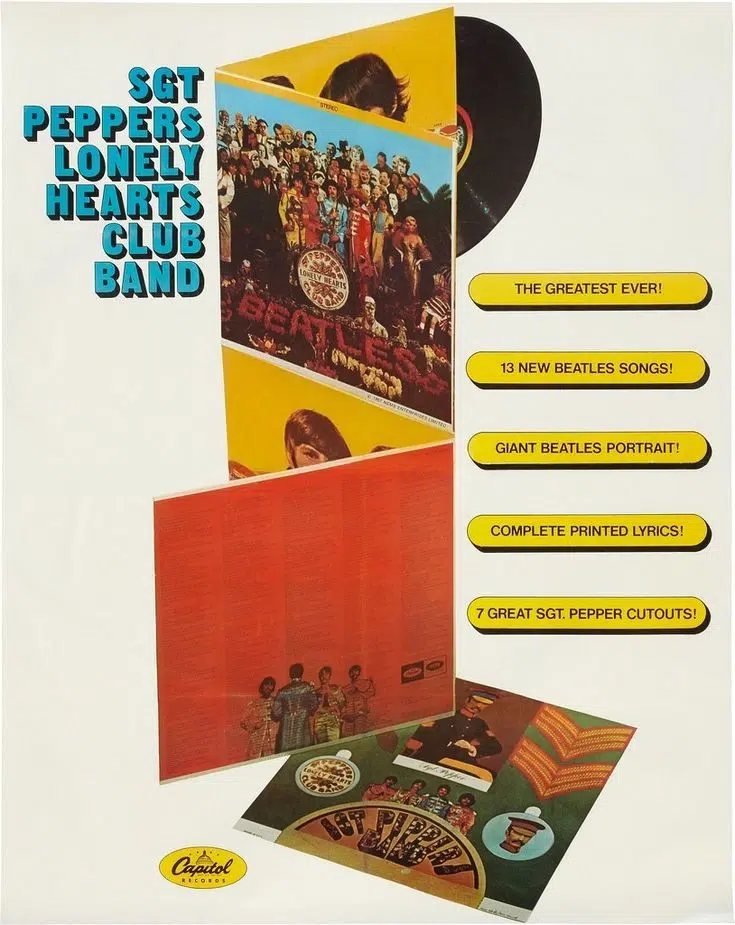
The total cost for the cover art was almost £3,000, which would be equivalent to £58,000 in 2021. This was a lavish amount for a period when album covers usually cost around £50. Robert Fraser and Michael Cooper’s fees added up to £1,500, with Peter Blake and Jann Howarth receiving £200 out of that sum.
When we started dreaming up ideas for the cover, the main problem was that people thought it would be too expensive. They’d never paid so much to have a cover put together. Normally it was about seventy quid: a good photographer like Angus McBean would come in and take your snap, and that would be his fee,- seventy pounds.
Paul McCartney – From “The Beatles Anthology” book, 2000
Hire and use of Michael Cooper Studios for 8 days including personnel (3 fulltime assistants) plus overtime and expenses to staff for additional work during Easter weekend: £625.0.0
54 copy negatives @ 10/6 each: 28.7.0
54 20″x16″ prints @ 17/6 each: 47.5.0
Photography fee (SGT. PEPPER’S LONELY HEARTS BAND set and centre spread, closeup): 250.0.0
Art direction fee (Layout and co-ordination of sleeve and inserts, cutouts, song sheets, production of mechanical rough and artwork by Al Vandenberg for Michael Cooper Studios, including co-ordination and supervision of all aspects of design and artwork from Peter Blake and Simon & Marekka; supervision and co-ordination of printing, retouching and blockmaking): £350.0.0
Special fee to Peter Blake: £200.0.0
A contract dated 14 April 1967 described the various fees for the session, including a misspelling of the album title. From 30 March 1967: Cover shoot for Sgt Pepper | The Beatles Bible
I have very mixed feelings, because it’s sometimes given an over-importance. I mean, I’ve been painting now for forty-five years — and as Chrissie, my wife, says when I get upset about it, it was just a record cover. But, on another level, on any kind of list of record-cover designs it’s usually the number one. So I’m very proud to have done it, but also very bitter that because of Robert signing away any rights I had to it, we were paid only £200. I think the people who delivered the flowers were paid £250. I’ve never had any more money from it. So although it stills sells constantly, and everybody else is still making money from it, we never did. So I’m thrilled to have done it, but bitter about it.
Peter Blake – From “Groovy Bob: The Life and Times of Robert Fraser” by Harriet Vyner, 1999
In 1967, rumours started to emerge about Paul McCartney’s death in a car accident on November 9, 1966, and his alleged replacement by a look-alike. However, the rumour gained more popularity in October 1969, a few weeks after the release of the “Abbey Road” album. This album featured Paul barefoot on the cover, symbolizing a deceased person, and a Volkswagen Beetle with a number plate “28 IF” (Paul’s age if he had lived until 1969). Followers of the rumour have identified dozens of supposed clues to Paul’s death, including various from the “Sgt. Pepper” cover:
There is a hand above Paul’s head, which is a symbol of death. But, in fact, this hand belongs to Izzy Bon, and, in the photograph, he is waving to his fans. It was just pure coincidence that his hand was above Paul’s head.
Peter Blake – From “The Beatles: Off the Record” by Keith Badman, 2008
It is all bloody stupid. I picked up that OPD badge in Canada. It was a police badge. Perhaps it means Ontario Police Department or something.
Paul McCartney – Interview with LIFE Magazine, November 7, 1969
Details are murky, but one story is that Paul was gifted the patch by an OPP officer at Malton Airport (Now Pearson International) in August 1965 when the Beatles were in town to play two shows in one day at Maple Leaf Gardens.
Another tale suggests it was given to John Lennon by an Ontario cop in 1966. Still another story says that the patch was one of four given to the Beatles by an OPP corporal at the airport on September 8, 1964, as the Beatles waited to board a chartered flight to Montreal. According to Piers Hemmingsen’s The Beatles in Canada (RED), the corporal’s name was Glenn Hickingbottom.
Paul, John and Ringo each personally got a patch while George (who was unwell that day and boarded the plane early to get comfortable) presumably got his later. As far as anyone knows, all the patches were stuffed in a bag with all the other gifts the Beatles received
From ajournalofmusicalthings.com
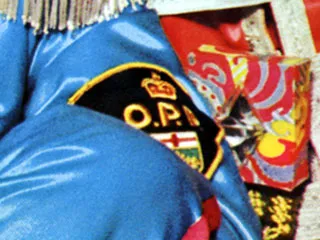

The Beatles Diary Volume 1: The Beatles Years
"With greatly expanded text, this is the most revealing and frank personal 30-year chronicle of the group ever written. Insider Barry Miles covers the Beatles story from childhood to the break-up of the group."
We owe a lot to Barry Miles for the creation of those pages, but you really have to buy this book to get all the details - a day to day chronology of what happened to the four Beatles during the Beatles years!
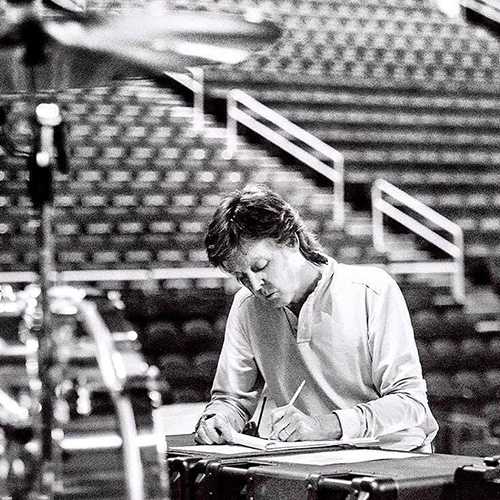
Notice any inaccuracies on this page? Have additional insights or ideas for new content? Or just want to share your thoughts? We value your feedback! Please use the form below to get in touch with us.